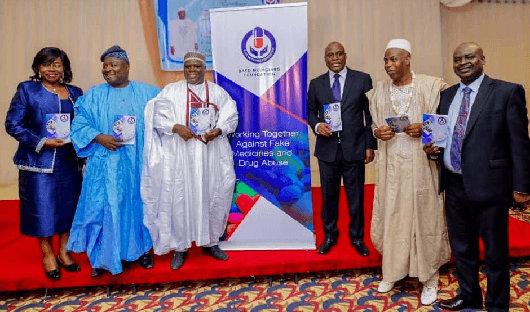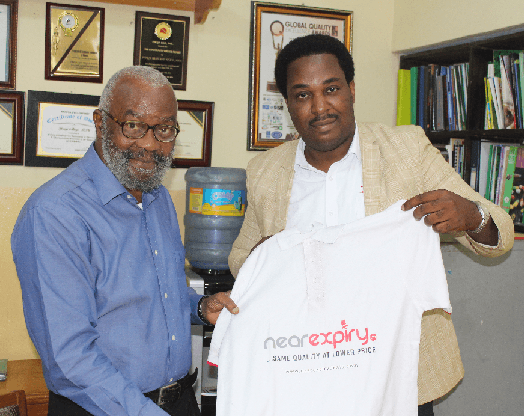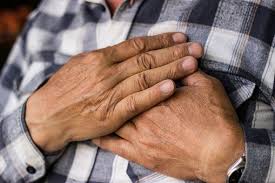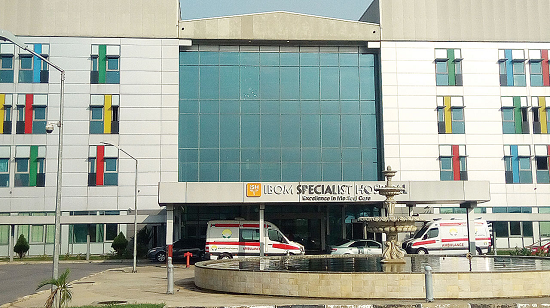For thousands of years many cultures have used herbs and plants not only as food but also to treat illnesses. WHO estimates that eighty percent of the world’s population uses some form of herbal medicine for some aspect of their primary healthcare and about one-forth of all conventional medicines including roughly 120 of the most commonly prescribed drugs contain some ingredient derived from plants.
Ancient cultures had no idea why herbs worked they simply knew that certain plants produced desired results. Several herbs are foods- e.g. Ginger, Garlic or food like in nature. The use of spice and herbs may also have developed in response to the threat of food borne pathogens, especially here in the tropics- where pathogens are most abundant- recipes are highly spiced and spices with the most potent antimicrobial activity tend to be selected.
Herbal medicine also known as phytotherapy or phytomedicine refers to the using of a plants leaves, seeds, berries, roots, bark or flowers for medicinal purposes. Phytomedicine is a recently coined term referring to a herbal medicine which is whole plant product rather than a single isolated compound Researchers found that people in different parts of the world tend to use the same or similar plants for the same purposes. An estimated ninety percent Nigerians are on herbal products.
In the early nineteen century when chemical analysis first became available scientists began to modify and extract active ingredients; later chemists began making their own versions of plant compounds thus herbal medicines declined in favor of drugs. It is interesting to know that the pharmaceutical industry was originally based on the ability to isolate these ingredients and make them available in the purer form. Many herbs contain powerful medicines Some common drugs derived from plants include:
Atropine-from Belladonna leaves
Colchicine-from Autumn crocus
Digoxin-from Foxglove
Ephedrine-From Ephedra
Morphine-from Opium poppy
Quinine-from Cinchona bark
Vinblastin, vincristine-From Periwinkle
In 2001 researchers identified one hundred and twenty two compounds used in mainstream medicine derived from ethno-medical plant sources. Notably 80% of these compounds were used in the same or related manner as the traditional ethno medical use.
Furthermore, God working through nature provides other ingredients in the same herbs to balance the more powerful ingredients; these other components ,less potent, may act as buffers, synergists or counterbalances working in harmony with the more powerful ingredients. In many cases, scientists are not sure of what specific ingredient works to treat a condition , whole herbs may contain many active ingredients that work together to produce a beneficial effect. Western standards favor a single active ingredient while herbs contain several active ingredients that work together to perform a specific effect .The herbal product derived from a whole plant is considered the active entity though it may contain hundreds of individual active components A number of factors determine how effective a herb will be; The type of environment-soil quality on which the plant grew and how it was harvested and processed. The potency of herbs varies on the climate and soil condition where they are grown A growing body of research has pointed to the therapeutic potential of various herbs- a case of note, here in Nigeria is ciklavit containing cajanus cajan and Niclosan are used in the management of sickle cell anemia; indeed nature’s pharmacy is an abundant one.
All plants produce chemical compounds as part of their normal metabolic activities .These are divided into primary and secondary metabolites; primary metabolites are sugars and fats, secondary metabolites include toxins, pheromones phytoalexins, and allelochemicals. Plants upregulate and downregulate their biochemical paths in response to a local mix of herbivores, pollinators, and microorganisms .The chemical profile of a single plant may vary over time as it reacts to changing conditions Plant synthesize a bewildering array of phytochemicals.it is these secondary metabolites and pigments that have therapeutic actions in humans and are refined to produce drugs. Sick animals tend to forage plants rich in secondary metabolites such as tannins and alkaloids since these phytochemicals often have antiviral, antibacterial, antifungal, and antihelmintic properties.
Until about one hundred and fifty years ago all medicines were derived from natural remedies; indigenous rain forest tribes rely on the rain forests for all their medicines. Researchers estimate that the rain forests contain literally thousands of useful medicinal herbs. Starting from 1975 and accelerating during the past few years many people have turned to herbs; hence their usage as alternative to drugs has increased dramatically .This revival in herbal medicine is due to disillusionment with modern medicines, the side effects of modern drugs and the belief that natural remedies are superior to a man made ones. In the last twenty years public disaffection with the cost of prescription drugs has also given rise to an interest in returning to natural or organic remedies and have led to an increase in herbal drug use. Many are looking towards natural herbal medicines to address their health concerns without having to dish out hundreds of naira for treatment. Herbs are increasingly used with other drugs rather than in place of drugs raising concerns about interaction of drugs and herbs. Most patients before coming to the pharmacy or seeing the doctors have already taken or are still on herbs . Many don’t tell their health care provider of herbs that they are taking concurrently. – nearly 70% of those taking herbal drugs –most are well educated- are reluctant to tell. Why? The Health practitioner responds negatively, shows disinterest and could ridicule them. The pharmacist cannot sit on the sidelines. He must be informed as regards potential herb drug interaction to adequately counsel his patients. During the preliminary consultation with the patients it is obligatory for the health practitioner to know if patients is on herbs and what herbs he is on; Often, patients neglect to report the use of herbal products because they underestimate the significance of these products to the whole clinical picture. This is in addition to their reluctance to divulge information about the use of unorthodox drug therapies to people seen as conventional healthcare providers. Unfortunately, a lot of medical professionals don’t know much more about complementary or herbal medicine than their patients- according to a survey .Most are just as poorly informed about herbal medicines as the general public and many medical experts exhibit a lack of interest in asking if the patient is taking herbal medicines; many do not ask because they do not know how to respond. Several, even if they knew, would not know how to assess or use such information. Research has shown most healthcare practitioners lack knowledge to provide guidance on herbs, leading to a worrying conflict with patient expectation as more people seek help from alternative health care practitioners as well as conventional health care providers. On the other hand, most patients feel that prescribed medications will be effective in treating them if combined with herbal remedies yet other patients feel that herbs reduce the side effects of modern drugs Today Herbal alternative medicine is considered another solution to address a growing number of health related concerns even though the effectiveness of many herbal remedies remains unproven.
A lot of herbalists concede that pharmaceuticals are more effective in emergency situations when time is the essence. However, they claim over long time herbs can help prevent disease and provide nutrition and immunological support that pharmaceuticals lack. They reject the notion of a single active ingredient arguing that the different phytochemicals present in many herbs will interact to enhance the therapeutic effect and dilute toxicity. They argue that a single Herb may contribute multiple effects and it is generally assumed that the specific combination of secondary metabolites in the plant are responsible for the activity claimed or demonstrated in a concept known as synergy. However, the herb industry remains unregulated and without adequate quality control many herbs carry inadequate or inaccurate labeling therefore it is mandatory to advice patients to make sure label states specific percentages, amounts and strengths of active ingredients. Buying standardized herbal supplements helps ensure the right dose is given., herbal products are often mislabeled and may contain additives or contaminants not listed ; some may interact with conventional drugs and are toxic if used improperly or at high dose- others may contain high levels of heavy metals including lead, mercury and cadmium.
Herbs can interact with pharmaceutical drugs and alter their effectiveness some effects range from the simply annoying to the deadly.
These interactions, in turn ,can increase or decrease the effectiveness of administered drugs. Some interactions are obvious and others are gradual and subtle and result over a period of time. The potential for herbs to impact the effectiveness of conventional drugs is one of the major issues facing health care practitioners today.
Drug/Herb interaction may be the result of various processes these may include alteration in the pharmacokinetics of the drug, such as alterations in the absorption distribution, metabolism and excretion of the drug ; such absorption may be affected by drugs that change the PH of the stomach .Antacids may neutralize, decrease or inhibit secretion of stomach acid. Drugs such as metoclopramide may increase GIT motility and possibly decrease absorption of herbs and Haloperidol decreases GIT motility and increases absorption of herbs. Therefore it may be pertinent to decrease the dosage of herbs when a patient takes a drug that decreases the GIT motility and so increase overall absorption and increase the dosage of herb when a patient takes a drug that increases GI motility and decreases overall absorption .A notable system, the enzyme comprising the cytochrome p 450 oxidases may be affected by enzyme induction or inhibition. it is the most common enzyme system within the liver used to convert a drug or herb into another chemical; interference at one or more subtypes of this enzyme could cause more or less of a constituent to be available to the body and so may cause overdose or underdose. An instance of this is St john’s wort used for depression which may decrease the effectiveness of antiviral drugs in HIV patients. St John’s wort affects the metabolism of convectional medications by affecting liver enzyme function. Pharmacogenetic variation may affect drug metabolism. Several metabolizing enzymes are subject to genetic variation in activity and this can lead to differences in rate of clearance of herb from the plasma. Pharmacogenetic variations are relatively common and may vary significantly between races.slow metabolizers are likely to develop adverse effects while fast metabolizers may never attain therapeutic concentrations of the drug.
Interactions may be the result of pharmacodynamic properties of the drug eg coadministation of a receptor antagonist or agonist for the same receptor
Drug herb interaction significantly affect circulating levels of the drug and hence alter chemical outcome- the identification of drugs that interact with commonly used herbal remedies has important implications in drug development.
Much research is needed in herbal therapy to examine individual plant constituents and to determine how plants interact with foods and drugs. When drugs are prescribed the dosage and quality of the product is more or less assured such is not he case with herbs nevertheless they have been found to be an effective form of therapy.
The risk of drug /herb interactions increases with the number of products consumed
For 2 products risk is 6%
For 5 products risk is 50%
For 8 products risk is 100%
Concerns about Herb drug interactions are multiplied for those patients taking multiple medications often prescribed by multiple physicians who may or may not be in communication with one another concerning their medical reasoning.
The line that separates herbs and drugs has been blurred in recent decades with increased accessibility to different treatment modalities; it is not uncommon for a patient to seek care from several doctors for an ailment as a result patients take multiple drugs, herbs and vitamins. An increasing percent of public is using herbs, most of the time on the urgings of relatives, friends, and colleagues. In many cases herbs are used supportively to maintain health while a person is on drug therapy. Ironically, herbal remedies are now available for everything making the ability to self medicate greater than ever.
The mechanism of action of many herbs has not been determined: Therefore the exact mechanisms of Drug-Herb interactions are also unknown. To prevent herbs from binding with drugs the drug should be taken one hour before or two hours after herbal products Patients must be advised to stop all herbal products 5-seven days before surgery, this is because there is no pharmacokinetic data on how long it takes for herbal products to be cleared from the body .if patient is having emergency surgery procedure he must counseled to avoid herbs that affect clotting time e.g. garlic, ginger ,gingko, ginseng.
All drugs with a narrow therapeutic Index e.g. cyclosporin, digoxin ,lithuim, phenytoin, warfarin amitryptiline,indavir -some are substrates for cytochrome p 450 system and may have either an increased adverse effects or less effective when used with herbal products- it is important to note that some that herbal products may have been consumed in the form of teas. Concerns are raised with regard to the use of laxatives because of the possibility of reducing potassium levels –when combined with drugs that act on the heart and are sensitive to potassium levels . The pharmacists with his insights into pharmacology can foresee possible interactions and take precautions to avoid incompatibilities. Several clinically. Important drugs have been identified that interact with commonly used herbs.
Drug herb interactions can significantly affect levels of the drug and hence clinical outcome.
Pharmacist must be a good source of information both to the health professional and to the layman and a veritable source of information in accessing potential for herb /drug interactions. Identification of drugs that interact with commonly used herbal remedies is very significant in designing a drug therapy .In addition, it is important to know formula of ingredients prescribed not just what formulas are used for and dosing patterns. The community health practitioner must make it a point of responsibility to understand every drug that his patient is taking in addition to knowing the herbs he wants to prescribe-that is after doing the normal history, exam and diagnosis. Then, he can construct a herbal formula to maximize the patients benefits. High risk patients such as the elderly, patients taking three or more medications for chronic conditions, patients who are diabetic are at risk. In some cases a drug herb interaction occurs because a herb is misused, taken in high doses or combined with a medication that has similar effect –eg combining blood thinning drugs with blood thinning herbs.
Some interactions are immediately obvious and some are gradual and subtle over a period of time. Some drugs have been identified that interact with commonly used herbal remedies : To find out if there is any known interaction between the drug and the herb put the drugs name and herb into google scholar www.scholar.google.com
Or go to www.integrative.com and plug in either drug or herb to see their interactions also determine if there are any theoretical interactions by having a basic knowledge of basic fundamental pharmacology .
It is necessary to know the ADME scheme and the therapeutic index. The ADME scheme encompasses how a drug acts within the body and includes absorption, distribution, metabolism and elimination. If there are known or potential interactions find an alternative. While, in some situations, a pharmacist may have little control over the pharmaceuticals that our patients take. The pharmacist can look at the herbs he wants to prescribe and potentially change them to safer similar herbs or even take them completely off. Once a formula has been determined and the risk minimized the dose should be prescribed at minimal levels and the dose slowly increased. Patients should be advised to discontinue if side effects develop. The dose can be increased if there are no negative reactions until the desired dose is achieved; this can take a couple of weeks- taking into account age, weight and condition of the patient. The pharmacist can make a brochure to discuss with patients and thus allay their fears this means better compliance and better outcomes.
It should be noted, however, that Herbs are no substitute for healthy lifestyle and good nutrition as more people switch over to herbs instead of or in addition to their prescription medicines.
SOME COMMONLY USED HERBS AND THEIR DRUG INTERACTION PROFILE
|
Name of Herb |
Usage |
Interaction / Effect
|
|
Alfalfa
Medicago sativa |
As a diuretic,anti-inflammatory and antifungal. lowers cholesterol alkalizes and detoxifies the body. |
Warfarin activity may be lowered because of high content of vitamin K in the herb. With chloropromazine and tetracycline there is increased photosensitivity. |
|
Aloe
Aloe vera |
Antifungal,Antibacterial,and Antiviral useful also in AIDS, Cancer ,Hemorrhoids Amenorrhea. |
Aloe has hydrocollloidal carbohydrate component and as such is apt to bind with drugs; particularly when consumed in whole or powdered form to prevent this drugs should be taken one hour before or two hours after this product. It can also cause diarrhea reducing the action of drugs that have a narrow therapeutic index. |
|
Cascara sagrada
Frangula purshiana |
Chronic constipation.
Acts as a colon cleanser and laxative |
It can cause body water and salt imbalances fatty stools and laxative dependency. |
|
Cinnamon
cinnamomum zeylandicum |
Counteracts congestion and aids peripheral circulation .Enhances digestion. Useful in diabetes, yeast infection. |
can cause increased intestinal activity. |
|
Cofee
Cofea arabica |
To increase alertness. |
side effects include fast pulse, insomnia, restlessness, muscle twitches and tremors. |
|
Cola
Cola nitida
cola acuminata |
Mood and personality disorders
To increase alertness
To stimulate the heart. |
Effects are yellow stains on teeth nervousness and restlessness. |
|
Cranberry
Vaccinium macrocarpon |
Used to prevent urinary tract infections. |
In diabetics-who are prone to urinary tract infections – if cranberry juice is used to prevent urinary tract infections only the sugar free variety should be used |
|
Dong Quai
Angelica sinensis |
mild sedative, laxative, diuretic .Used to manage hot flushes ,menopausal symptoms premenstrual symptoms.
|
With warfarin and low molecular weight heparins alters bleeding times and should be stopped at least seven days before surgery. |
|
Ephedra
Ephedra sinica/Ephedra nevadensis |
Relieves congestion and aids in the elimination of fluids, relieves bronchial spasm and stimulates central nervous system. May decrease appetite and elevate mood. |
With cardiac glycosides it increases the likelihood of dysrhythmias.
With MAOIs and decongestants it enhances sympathetic activity and increases blood pressure.
With b blockers, other antihypertensives and antidepressants causes elevation of blood pressure, tachycardia and increased anxiety. |
|
Evening primose
oenothera blennis |
premenstrual syndrome, allergic skin reactions nervousness. |
Because it promotes the production of estrogen women suffering from cancer that is diagonised as estrogen receptor positive should avoid or limit their intake of primrose oil. This herb can also cause blood clots and immune system suppression. |
|
Garlic
Allium sativum |
Detoxifies the body also protects against infection by enhancing immune function.
Lowers blood pressure/improves circulation
lowers blood lipid levels and stabilizes blood sugar levels. |
With warfarin it increases bleeding tendency.
With antidiabetic drugs it increases the likelihood of hypoglycemia. |
|
Gingko
Gingko biloba |
Improves cognitive functions
in persons with Alzheimer’s disease / dementia. improves blood flow in persons with peripheral vascular disease |
Interacts with drugs affecting platelet activity such as warfarin provoking bleeding disorders. With Antihypertensive thiazide diuretics there is reduced drug efficacy.
|
|
Ginger
Zingiber officinale |
Used as antinausea and antispasmodic, treatment of common cold |
Potent inhibitor of thromboxane synthetase thus it prolongs bleeding time particularly in tablet form.
|
|
Ginseng
panax quinquefolius |
Strengthens the adrenal and reproductive organs .It enhances immune function promotes lung functioning and stimulates the appetite. useful for bronchitis circulatory problems and diabetes. |
Interacts with drugs that lower blood sugar ie diabinese, glucophage-leading to potentially dangerous rise in drug efficacy
reduces the drug efficacy of immunosuppressants. it may interact with MAOIs to increase headache insomnia, tremulousness. |
|
Green tea
Camellia sinensis |
Acts as an antioxidant and helps to protect agaisnt cancer.shows promise as a weight loss aid |
Interacts with milk- milk may bind with the beneficial compounds making them unavailable to the body. Green tea decreases calcium absorption it should be ingested two hours before or after mineral.
Caution: contains a small amount of caffeine, so should not be used by pregnant or nursing mothers |
|
Guarana
paullinia cupana |
Contains high caffeine content
aids weight loss and body building,to stimulate the nervous system
Curbs appetite |
Due to its caffeine content taking more than 6oomg is not recommended for people with high blood pressure or heart conditions.may potientiate the action of B blockers contains theophylline and should not be used concurrently |
|
jojoba
simmondsia chinesis |
Used externally to treat conditions such as dry skin,dryscalp, psoriasis and to promote hair growth. |
For external use only. |
|
Kava Kava
piper methysticum |
it relieves tension anxiety, nervousness without affecting alertness. |
It acts as a dopamine antagonist and may increase tremor and make medications less effective. It also enhances the effect of alcohol, tranquilizers and antidepressants. |
|
Lemon grass
cymbopogon citratus |
Acts as an astringent tonic and digestive aid . |
Relatively safe however contains iron which may potentiate the effect of ferrous containing tonics. |
|
Rose hips
Rosa canina
|
To boost immune system Also as an antioxidant and to promote wound healing. |
Rose hips contains high vitamin C such doses can interfere with home glucose tests. |
|
Saw palmetto
Serenoa repens |
Acts as a diuretic urinary antiseptic and appetite stimulant Inhibits dihydrotestosterone which contributes to the enlargement of the prostrate. |
With blood thinners it causes a potential dangerous rise in drug efficacy. Tannic acids in it may inhibit the absorption of iron so it should be taken two hours before or two hours after meal .
|
|
Senna
cassia acutifolia |
Used in constipation. |
using senna with calcium channel blockers may alter its action and cause unwanted side effects |
|
St john’s wort
Hypericum perforatum |
used for depression and nerve pain
Helps control stress. |
current research suggests it acts as a selective serotonin reuptake inhibitor so concurrent use of it and SSRIs is contraindicated.
patients are advised to wait 2 weeks after taking an SSRI before taking it or between stopping it and taking an SSRI.
With barbiturates and benzodiazepines has synergistic effect, increases sedative effect and may result in coma.
With cholesterol lowering drugs it potentiates adverse effects.
A component of St john’s wort –hyperforin- has profound effect on liver enzymes –the cytochrome p450system of the liver- kicking these enzymes into high gear thus with;
Digoxin can reduce serum levels by as much as 25% reducing efficacy. In protease inhibitors such as Indanavir used in HIV infection there may be reduced levels of the drug leading to drug resistance and hence treatment failure.
Caution-large amounts can cause heightened sun sensitivity |
Finally,herbs can interact with one another in strange ways; sometimes they enhance each others effects such that the net effect is much greater than a simple addition of individual actions. Sometimes, they interact to produce completely new actions creating an action vector that points to a different direction than simple summation of two vectors. At other times, interactions may create toxic effects not present in either herb alone.
Researchers estimate that the world’s rainforest contain literally thousands of potentially useful herbs. Today, and all over the world, medicinal herbs are available in different forms as Tinctures and extracts, capsules and tablets, lozenges, teas, juices, vapour and inhalation treatments .herbal baths, poutices and compresses ,oils, ointments salves and rubs
Inspite of the influence of modern technology and orthodox medicine, man’s dependence on plant has in no way decreased . It is thus pertinent that the global recognition of nature’s green pharmacy should inspire individuals to protect this extraordinary resource. Nowhere is the diversity of the plant kingdom more evident than in the world’s tropical rain forests which supports more than half the total number of plant species on earth; yet only about one percent of rain forests have been studied. It is noteworthy that from the thousands of plants identified as carrying potential anticancer compounds more than half are native to rain forests. The rain forest is now highly prized for new medicinal compounds and many scientists are beginning to see the need to properly identify, study, and promote the conservation of plants for the benefit of humanity as very important. This is of particular significance to us here in Nigeria who are well endowed with rain forests.
By Arine Patrick
References
1.Kraft K complimentary and Alternative medicines in the context of prevention of disease and maintenance of health.
2.Smith M Drug interactions with Natural health products / dietary supplements: A survival guide paper presented at complementary and alternative medicine: Implications for clinical practice and state of the science symposia; march 12,2000; boston,Mass.
3.Kuhn M.Complimentary Therapy-vol 4 No l Hamburg NY: Educational services ; April
2001.
4.Henney J.Risk of interactions with St john’s wort JAMA 2000;283:13
5.Charles W fetrow and juan Avila The complete guide to herbal medicines
6.Phyllis A.Balch Presciption for nutritional healing a practical A-Z reference to drug free remedies
7.Roger W.Wicke Herbalist review.Herb-Herbm and Herb drug interactions issue
http//www.Consumer reports health.com
8.Abdullahi Mann, Muhammed Gbate, Abdulkadir Nda Umar Medicinal and Economic plants of Nupeland 2003
Lanfear DE,Mclead HL pharmacogenetics: using DNA to optimize drug therapy .Am fam physician…….



















































